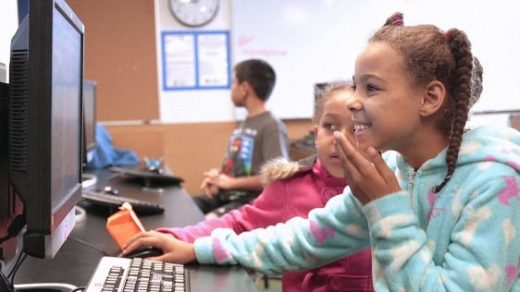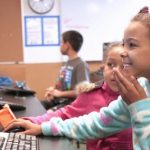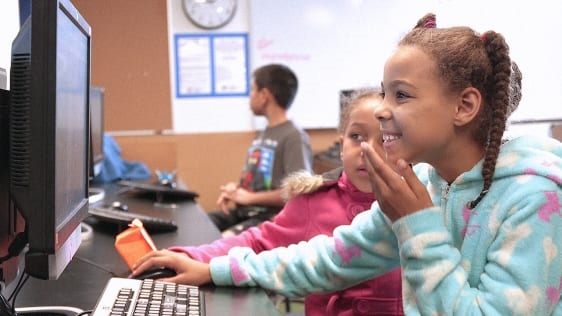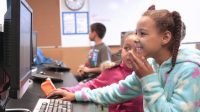Code.Org Is Giving Kids A Chance To Code By Bringing Computer Science To Schools
“What would the school system look like if computer science had the same curriculum the way biology does?” That’s the question Hadi Partovi asked himself before launching his education nonprofit, Code.org. Because CS had not been taught in schools before, he quickly realized they needed teachers–and a training program for the teachers. They would have to build CS courses for each level in the K-12 system, and host hands-on professional training workshops to train teachers. They would also need to mount a fundraising and advocacy effort so they could solve the problem of a nonexistent CS curriculum at a national and global scale by convincing school districts, administrators, and policymakers about the need for computer science education in our schools in the 21st century.
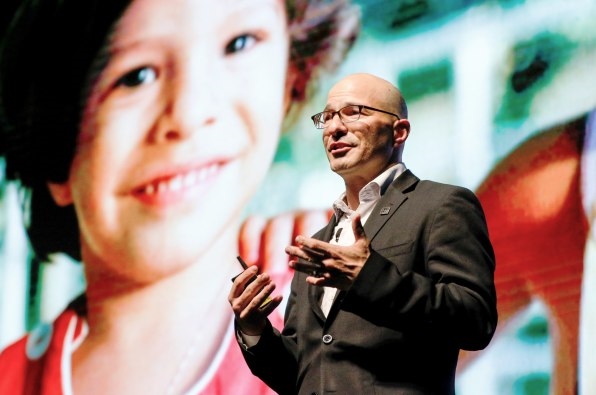
Partovi says what he remembers most of the first year of launching Code.org is “how little sleep I got.” Funds were tight as Partovi and his co-founder, his brother, Ali, initially funded the venture with their own money; Partovi was the first and only employee for the first seven months.
By the end of their first year, it was clear that the program had filled a real gap in school curriculums, which had failed to keep up with the times. Students had participated in “The Hour of Code,” a one-hour intro to computer science designed to demystify coding, 20 million times. And 500,000 students had learned to code using Code.org‘s courses in classrooms worldwide, Partovi points out. He says the concept took off, “faster than Facebook, Google, or anyone else.”
Today, the organization says 500 million students worldwide have taken the Hour of Code. Code.org has partnered with 180 of the largest school districts in the U.S. to add CS to the curriculum. These districts teach almost 10% of all U.S. students, and 15% of Hispanic and African American students. More than 800,000 teachers worldwide have signed up to teach the introductory CS courses on Code.org’s platform. And, as of 2017, students can take a course in computer science at the AP level for college admissions in the U.S.
Despite the fact that deciding what fits into curricula in America remains a deeply political issue, Partovi says, “we got very lucky because nobody disagreed that computer science is needed. They see the value of computer science in all the products we use.” Code.org‘s courses tend to replace the antiquated technical education courses, which teach students “how to browse the web or create documents, topics they already come to school knowing. What if we instead we teach them how to write a program or build an app?”
He credits the remarkable growth they’ve had to word of mouth endorsements from teachers telling other teachers about the program, which, in turn, enables Code.org to appeal to school administrators and policymakers by noting large numbers of teachers.
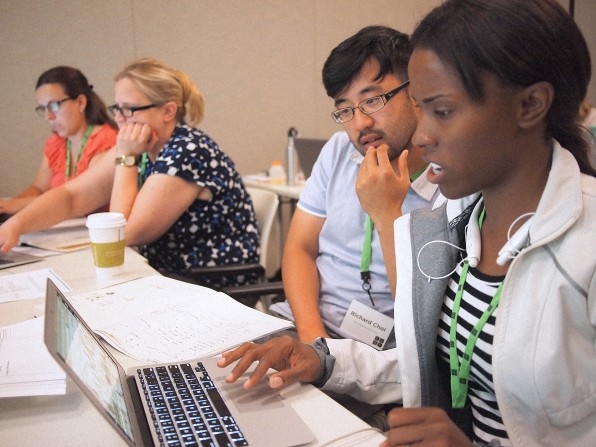
Using a diversity lens
Partovi’s mother had been a computer scientist in Iran. When the family came to the U.S. as a refugee from Iran, Partovi ended up studying computer science at Harvard in the early 1990s. Working in the computer science lab, which was the only way you had access to a computer, was a “sea of white and Asian men, with only one or two women.” It was the first time he became acutely aware of the lack of diversity in the field.
So one of his goals in launching Code.org has been to get more women and minorities to study computer science. He says the nonprofit uses a diversity lens in everything they do–from the training videos they develop to the teacher training workshops, and the “Hour of Code” video–making sure women and minorities are well represented. For instance, they recently released a series of videos, “How Computers Work,” distributed in partnership with the Khan Academy and Alaska Airlines, intended to teach anyone to code, featuring narrators like the Apple designer May-Li Khoe; Erica Gomez, a software engineer at Amazon; Madison Maxey founder of Loomia, alongside Bill Gates. Developing the series was a two-year effort, “It was personally important to me to showcase diversity in the videos to show that computer science is for everyone.” Partovi adds.
In thinking about their impact, Code.org measures diversity as a key metric across their programs. Globally, 10 million girls have accounts on their platform and half of those girls were actively coding in the school year, mostly in grades 1-8, according to Code.org’s 2017 annual report. Forty-five percent of the students in their CS classrooms are female and 48% minorities from underrepresented minorities, which is roughly double and triple of the historical averages for computer science courses. Partovi points out that, “if only 1% of these girls continue to study CS in university, that would outnumber the gender gap that exists today.”
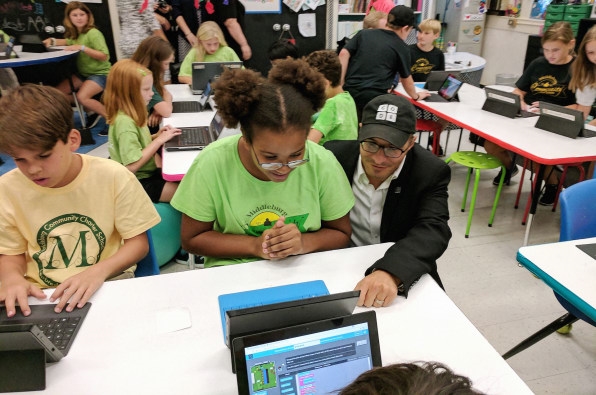
From Product Manager to Leading a Movement
From working at Microsoft and other tech ventures, Partovi knew how to build great products, so building the coding platform and the CS curriculum was the easy part. He concedes that “the difficult part has been leading this movement to disrupt education–and empowering teachers so they can disrupt what we teach in classrooms.” Partovi sees the disruption as a rethinking of what we teach while most debates are focused on how we teach (arguments about more testing, longer school days, smaller classrooms, etc). And he says when you are involved in such a systemic disruption, the challenge comes from working with multiple partners, from school districts to funders and policymakers, who can all have their own agendas, and you have to learn how to balance these interests with an eye to the overall goals of your organization.
One such challenge for Partovi came when he had to decide if the organization was going to support the Trump administration’s $200 million per year expansion of computer science offerings in America’s schools. “I had personally worked on this for months with the administration. It was a difficult decision, partly given my immigrant background, and partly because the teachers who are our audience are really quite critical of the new administration. How we messaged our role in the process, applauding an action taken by the White House, and keeping the discourse nonpartisan, all that was a challenge–not only in the education community but even among my own staff, because people who strongly opposed the administration were concerned that we would ‘normalize’ other actions of the administration.”
Partovi says he’s had to make sure all their partners understand that the partnership with the White House, which led to this commitment was four years in the making, long before the current administration. It began with President Obama, “to win his support for computer science in speeches, in his State of the Union address, in his personal participation in the Hour of Code, and to encourage his administration to fund computer science.”
I ask him what advice he has for changemakers who are trying to lead similar movements. “The biggest advice I give people is to aim for the stars, not for small incremental goals. It’s counterintuitive, but the bigger we dream, the more people want to support us, which makes bigger goals sometimes seem easier to hit than small ones. Right now, one thing I’m working on is I’m trying to see if I can get every country in Latin America to add computer science to the curriculum, continent-wide. On the one hand, it sounds impossible. On the other hand, because it’s a big idea, it’s easier to win support.”
(21)

